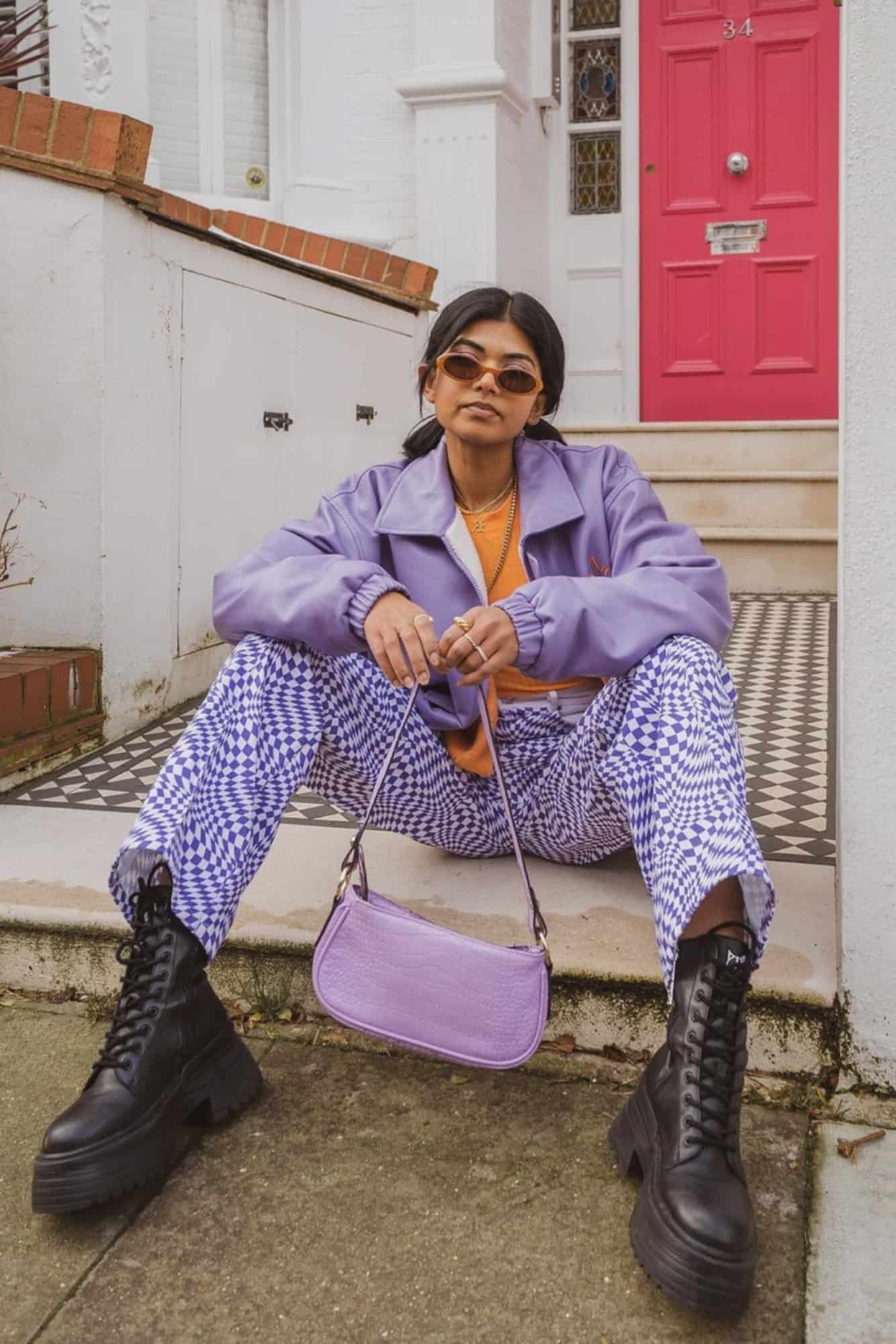Lockdown madness peaked earlier this month when a Depop user tried to sell a Chiltern Railways train seat cover as a top. Claiming to have found multiple signs – which warned passengers to socially distance when possible – on the pavement outside Marylebone Station, Central St Martins fashion student Mhari Thurston-Tyler decided to repurpose them into a line of bandeaus. With her new stock advertised by the viral Twitter and Instagram pages Depop Drama, Mhari was ridiculed across social media and news sites.
Over on Depop, however, it was another story. Forced by the app to cancel orders of the original tops due to the fact it was technically stolen goods, Mhari revealed she’d received so much attention that she planned on designing her own line inspired by the signs entitled “children railways”. What seems ridiculous became a Depop must-have, and is typical of the new state of thrifting online.
The rise of thrift flipping
Thanks in part to TikTok embracing it as a trendier, more satisfying method of shopping, thrifting has become increasingly popular in the past year. According to a report by thredUP, sales across secondhand websites are set to boom by 400% in the next five years, but Depop is Gen Z’s clear favourite. Over 90% of Depop sellers and shoppers are under the age of 26 – a demographic which also happens to be TikTok’s core user base – and trends tend to manifest across both platforms. When cottagecore became TikTok’s look of the summer, Depop searches for the romantic, prairie-style aesthetic surged by 900%. A quick scroll through both apps will tell you that everyone is currently obsessed with North Face jackets, cut-out arm warmers and the same pair of Jaded London patchwork jeans.
In the most wholesome corners of TikTok’s thrifting community, shoppers have the best of intentions. A vast majority of #thrift’s 1.6 billion views centres on shopping for yourself and for the sake of the environment. Upcycling tutorials from the likes of Paige Sechrist, Cindy Liu and Kamila Robles guide sewing novices through renewing old or vintage clothes, as well as sharing top tips for sourcing high quality goods from your local charity shop. But over the course of the pandemic, more TikTokkers are using these upcycling skills to thrift flip. This sees shoppers purchasing cheap secondhand goods and reselling them, usually at an incredibly high markup.
You may also like
It’s hard to argue with young people using their skills to turn a profit, especially in the midst of a pandemic. However, this habit comes worryingly close to overstepping ethical lines in the thrifting community. For every TikTok of someone showcasing their Depop haul, you can easily find another who’s bought out a whole store’s worth of used denim to instantly flip for £50 a pop. Oversized items are popular on both apps, but purchasing this kind of stock usually entails finding plus-size clothing and marketing it as oversized to smaller-bodied customers. Some thrift flippers on TikTok even recommend purchasing larger sizes simply to give you more flexibility when tailoring and upcycling your purchases. Raiding secondhand stores to purchase Depop stock in bulk is not only taking away resources from those on a lower income – especially those looking for plus-size items – but practically gatekeeping sustainable shopping.
The fast fashion trap
This kind of behaviour probably isn’t intentional. Most of TikTok’s thrifters start from a position of simply wanting to shop better. But even vintage fashion has its trends, and isn’t immune to the pitfalls of fast fashion. When TikTok fell in love with Bella Hadid’s stripey vintage halterneck last year, a curious amount of users cropped up with the same find. A quick search of Depop brought up at least seven different stores claiming to have found the exact vintage shirt. You can also purchase it directly from China on eBay.
Multiple other TikTok favourites have undergone the same treatment (remember when everyone suddenly found the same vintage strawberry shirt?) with many shoppers left none the wiser. Occasional green-washing and railway thefts aside, there’s a lot of good about the internet’s thrifting community and what it’s done for sustainable shopping. Just don’t mistake thrift flipping for an entirely ethical business.
By Chloe James, fashion and beauty editor of CORQ.










